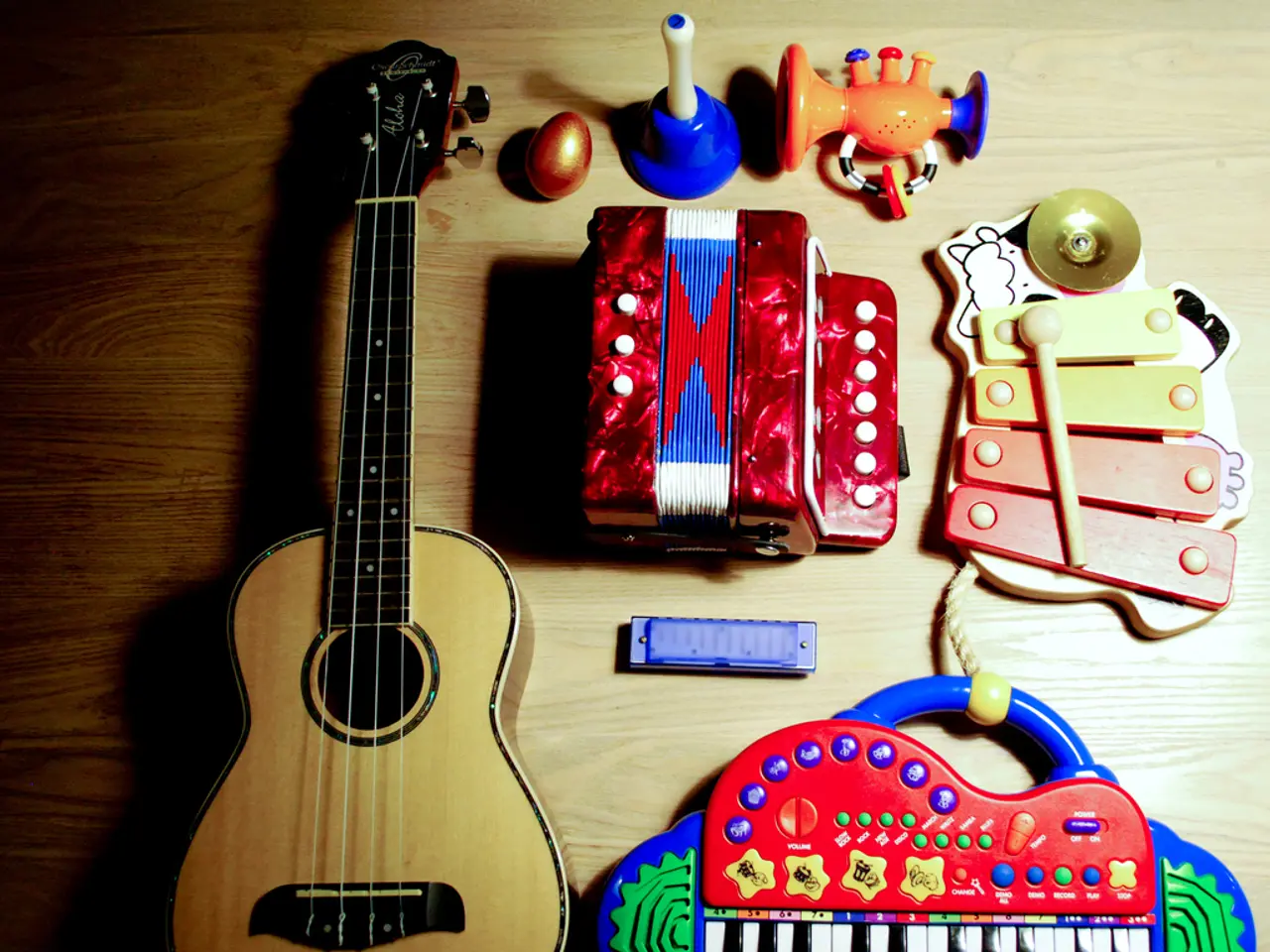Understanding the Bass Clef: Essentials of Sheet Music Interpretation
In the world of music, the treble and bass clefs are essential tools for notating pitches. These clefs, when used together, provide a comprehensive and efficient way to represent a wide range of notes, particularly in keyboard music.
The Treble Clef (G Clef) is centred on higher pitches, marking the G note on the second line of the staff. Its lines and spaces correspond to letters from E above middle C upwards. This clef is commonly used for right-hand parts on the piano or higher-pitched instruments like the violin and flute.
On the other hand, the Bass Clef (F Clef) is centred on lower pitches, marking the F note on the fourth line of the staff. It covers notes below middle C, which are difficult to notate in the treble clef without many ledger lines. This clef is primarily used for left-hand parts or lower-pitched instruments like the cello, bassoon, trombone, and bass guitar in their upper ranges, as well as the left hand on the piano.
These two clefs together reference middle C as a bridge, appearing on a ledger line below the treble clef and above the bass clef. This arrangement facilitates reading and hand coordination for keyboard players.
The division of musical notes into two parts using the treble and bass clefs reflects natural instrumental ranges. The treble clef is used for higher-pitched instruments, while the bass clef is used for lower-pitched instruments. This pairing provides a clear, readable system for composers and performers to indicate pitch range and hand assignment, enhancing musical clarity and performance accuracy.
It's worth noting that beyond the treble and bass clefs, there are other clefs used in music notation, each serving specific instruments or vocal ranges. For instance, the Alto Clef is centred on the third line of the staff and is primarily used by viola instrumentalists.
Mastering the bass and treble clefs can make a vocalist or instrumentalist more well-rounded, as it allows them to follow along with accompanying instrumentalists. For music students who want to learn these clefs, regular practice is essential, starting with familiarizing oneself with line and space notes, then progressing to reading simple clef notes and melodies.
In summary, the bass and treble clefs are paired in music notation to efficiently represent low and high notes respectively, especially in keyboard music, by dividing the musical spectrum into two manageable parts for the player. This system, when mastered, provides a foundation for reading and understanding music notation, opening up a world of musical possibilities.
[1] "The Grand Staff: Understanding the Bass and Treble Clefs in Music Notation." Music Theory for Dummies, 3rd Edition, pp. 13-16. [2] "The Treble and Bass Clefs: A Comprehensive Guide." Piano for All, Module 1. [3] "The Bass and Treble Clefs: A Practical Guide." The Complete Pianist, 2nd Edition, pp. 18-22. [4] "The Alto Clef: An Overview for Musicians." The Strad, 12 January 2020. [5] "Understanding Music Notation: A Guide to Clefs." The Music Teacher, 1 February 2021.
- Engaging in online-education resources, such as "The Grand Staff: Understanding the Bass and Treble Clefs in Music Notation" or "Piano for All, Module 1", can boost an individual's learning of the bass and treble clefs and their proper use in education-and-self-development.
- In addition to enhancing musical skills, mastering the treble and bass clefs can contribute to entertainment, as it allows musicians to perform various pieces, including those featuring both high and low pitched instruments, like songs with both violins and bass guitars.




